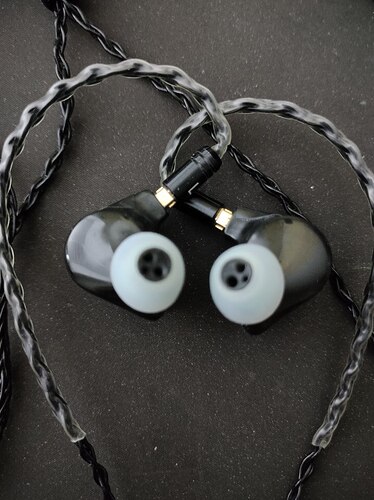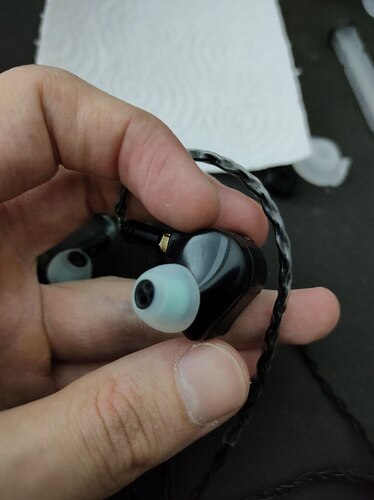I feel like I need to take responsibility for the whole debate going on, oops  I did NOT intend for it to get this involved!!!
I did NOT intend for it to get this involved!!!
I agree with much of your writeup, it’s a very balanced viewpoint. And it’s similar to the one I hold.
I think people misunderstood me. I never said that small drivers and large drivers behave the same, but rather that seeing a large driver and assuming better bass is, once again, a very reductionist way of looking at things.
At IEM scale, in a highly sealed system with a tiny enclosed volume, the level of excursion a driver undertakes is minimal. Fractions of a mm at most, nothing like a speaker in a room. The added surface area of a large driver means that sure, it doesn’t have to move as much to reach high SPL, but the excursions are so small that even a small driver is barely moving already. Of course, if you listen extremely loudly, or the tuning is very bass boosted, then sure, you MAY run into some problems. But the volume you run into problems at depends on much more than just the diameter. And regarding infrasonic, that is something that is FELT, not heard. When it comes to the confines of your ear canal, feeling it becomes a lot less likely.
There’s also the never ending debate on what good bass IS. Is it punchy and fast? Heavy and meaty? There’s a lot of opinions on the matter and each opinion will have a person have their own take on driver design. Should the diaphragm be as light as possible for high sensitivity/speed? Or rigid and weighty for more inertia and impact? Does it even matter in reality? There’s a nightmarish number factors to think about, size included.
I’m not even going to touch the concept of vibration because that is incredibly convoluted.
And then there’s the issue of distortion, love it or hate it. A well designed, say, 10mm driver will keep up with an average designed 14mm driver until extreme volumes, where the 10mm reaches its max excursion and starts clipping. Once again, it’s all about implementation and design.
All I’m saying realistically is that people are too worried about the numbers. It’s not fair to look at a smaller driver (or a BA even) and immediately discount it as having poor bass, or seeing a large one and instantly being interested. It’s the same as driver count - people seem to have understood lately that more drivers does NOT necessarily mean better. It CAN mean better, but better is not guaranteed. Same with driver size. Ear acoustics and room acoustics are two different beasts. Not every concept from speakers can be copied directly to the IEM world.
Once again, I apologise for any heated discussion created as that wasn’t my intention. I see both sides of the story, and while I don’t 100% agree with everything said on both sides, nothing said has been entirely nonsensical. I can understand the reasoning behind almost every point made.
My closing point, and my final say on this matter is this: Just listen to the damn thing! Don’t let a spec sheet cloud your judgement (and this goes beyond driver size, relying on specifications too much), much of the fun of the hobby comes from new experiences. Form your opinions on how the sound makes you feel. Because that’s what it’s all about - good sound. Expect the unexpected. Let yourself be pleasantly surprised with some things you expected to hate, and disappointed with things you thought you’d love.
Peace 





